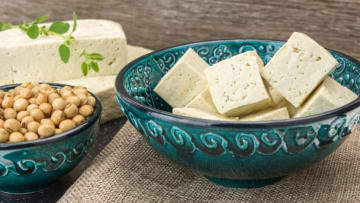عندما تتجمع العائلات معا في موسم العطلات، سيتجنب المحظوظون النقاشات المتحمسة حول الدين والسياسة. ولكن أمراً ثانياً لا مفر منه تقريبا: اللحوم البيضاء مقابل اللحوم الداكنة.
يدّعي عشاق اللحوم البيضاء أن اللحوم الداكنة دهنية؛ يشتكي محبو اللحوم الداكنة من أن اللحوم البيضاء جافة وتفتقر للنكهة.
ولكن لماذا توجد هذه الأنواع المختلفة من اللحوم، وما الذي يكمن وراء هذه الاختلافات؟ كأخصائي فيزيولوجيا العضلات، يمكنني أن أخبرك أنه يعود إلى الاختلافات الأيضية والوظيفية بين أنواع العضلات المختلفة.
انظر في كيفية تحرك الديك الرومي. هل سبق لك أن رأيت قطيعاً من الديوك الرومية تطير؟ بالطبع لا! إذا كان الديك الرومي مهددًا، فقد تستغرق الرحلة فترة قصيرة لمحاولة للهروب. لكن هذه الطيور تقضي معظم وقتها في الوقوف والمشي.
هذه الأنشطة - المشي والوقوف مقابل رحلة قصيرة ومذعورة - مختلفة تمامًا. إنها مدعومة بأنواع مختلفة من العضلات المصممة لهذه الوظائف المختلفة، ويمكنك أن ترى تلك الاختلافات على طبق العشاء الخاص بك.
ما الذي يجعل اللحوم الداكنة داكنة؟
فكر أولاً باللحمة الداكنة التي توجد إلى حد كبير في الساقين. يأتي هذا النوع من اللحوم من العضلات حيث تقضي الديوك الرومية وقتا في المشي.
يصف علماء فيزيولوجيا العضلات هذه الأنواع من العضلات بأنها "ارتعاش بطيء" أو العضلات من النوع الأول. وتسمى أيضًا عضلات التأكسد، والتي تشير إلى كيفية إنتاج الأدينوسين ثلاثي الفوسفات، والذي يختصر باسم ATP. فكر في ATP كعملة الطاقة للخلية لأداء وظيفة معينة. لا تحتاج الخلايا إلى وظيفة لكسب هذه النقود؛ انها ببساطة تنتجها.
يجب أن تكون عملية التمثيل الغذائي للعضلات قادرة على دعمها خلال أنشطتها الطويلة والمستمرة. في هذه الحالة، نظرا لأنه يجب إنتاج الكثير من الـ ATP على مدار فترات زمنية طويلة، تعتمد خلايا العضلات على الميتوكوندريا. الميتوكوندريا هي مثل المصانع التي تصنع ATP.
إنها الميتوكوندريا التي تعطي اللحوم الداكنة إحدى خصائصها المميزة (المثيرة للاشمئزاز؟) يمكنهم استخدام الدهون لإنتاج ATP. بسبب ارتفاع نسبة الدهون في العضلات، قد يرى بعض الأشخاص أن العضلات الداكنة دهنية، بينما يرى البعض الآخر أنها لذيذة.
تتطلب الميتوكوندريا أيضًا الأكسجين حتى تعمل. انهم يعتمدون على بروتين يحتوي على الحديد يسمى الميوغلوبين، والذي ينقل الأكسجين من الدم إلى الميتوكوندريا الموجودة داخل العضلات. وبسبب كمية كبيرة من الميوغلوبين، تبدو هذه العضلات داكنة.
ما الذي يجعل اللحوم البيضاء خفيفة؟
ماذا عن هذا اللحم الأبيض الأكثر جفافاً؟ مرة أخرى، من المفيد أولاً التفكير في وظيفته.
اللحوم البيضاء موجودة إلى حد كبير في عضلات الثدي، والتي تستخدم كقوة لازمة للطيران. لكن ضع في اعتبارك أن هذه الرحلة قصيرة للغاية بالنسبة للديك الرومي: طويلة بما يكفي للهروب من حيوان مفترس. هذه الوظيفة مناسبة بشكل مثالي لما يسميه الفسيولوجيون النوع الثاني أو العضلات السريعة.
يتم دعم هذا النوع من النشاط من خلال وسائل مختلفة لإنتاج ATP ، طريقة لا تعتمد بشكل كبير على الميتوكوندريا أو تحتاج إلى أكسجين. تستخدم العضلات البيضاء عملية تسمى تحلل السكر، والتي تتطلب الكربوهيدرات لإنشاء ATP . تكون فاتحة اللون بسبب انخفاض قدرتها على استخدام الأكسجين أثناء التمرين.
العضلات البيضاء تحتوي على نسبة منخفضة من الدهون لأنها لا تحتاج وليس لديها كمية كبيرة من الميتوكوندريا اللازمة لصنع ATP من الدهون. لهذا السبب يجد بعض الناس أن هذه اللحوم جافة.
أنواع مختلفة من الحيوانات تؤدي وظائف مختلفة بعضلاتها. على سبيل المثال، يجب أن تدعم عضلات الصدر للبط الرحلات الطويلة جدًا، ومثل أرجل الديك الرومي، تكون داكنة اللون ومحملة بالدهون.


